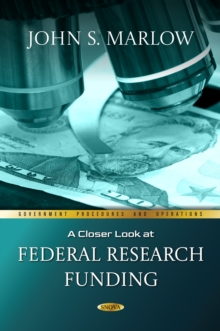
Reducing Motor Vehicle Accidents: Road Safety, Signal Controls, and Intersection Angles PDF
Edited by Aaron M. Glennon
Part of the Government Procedures and Operations series
Description
In 2021, motor vehicle crashes killed an estimated 42,915 people in the United States.
The number of fatal traffic crashes represents only a fraction of the total number of crashes which occur on U.S. roadways every year. Chapter 1 discusses the safety of our nation's roadways, explore programs and policies included in the Infrastructure Investment and Jobs Act to improve roadway safety, and learn from key stakeholders about their role in implementing these programs and other roadway safety strategies.
Chapter 2 evaluates the safety effectiveness of adaptive signal control technologies (ASCTs) at urban corridors and will benefit safety and traffic engineers and safety planners by providing greater insight into how ASCTs impact intersection safety.
Intersection crashes account for approximately 22 percent of fatal crashes and 40 percent of all crashes in the United States.
When designing new roadways or retrofitting existing roadways, careful consideration should be given to mitigation measures for skewed intersections as discussed in chapter 3.
Information
-
Download - Immediately Available
- Format:PDF
- Pages:370 pages
- Publisher:Nova Science Publishers, Inc.
- Publication Date:31/08/2023
- Category:
- ISBN:9798891130494
Information
-
Download - Immediately Available
- Format:PDF
- Pages:370 pages
- Publisher:Nova Science Publishers, Inc.
- Publication Date:31/08/2023
- Category:
- ISBN:9798891130494










